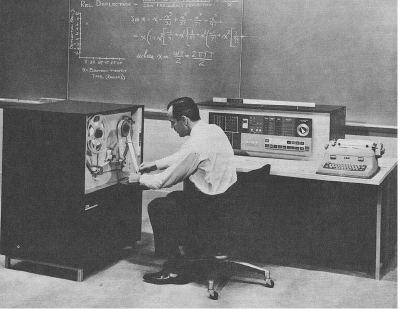2nd Generation Computers
Before Transistors
Vacuum tubes had numerous disadvantages as a building block for computers; not only were they quite large, they consumed large amounts of electrical current and produced large amounts of waste heat. First-generation computers were room-sized and required gigantic air conditioning systems. Even when properly cooled, the vacuum tubes still were prone to burning out and needing to be replaced.
| The Silicon Engine | ||
The Transistor
The transistor was invented in 1947
The powerful and ubiquitous silicon chips that run the computers, smart phones and even the cars and appliances we use daily all spring from the transistor. That breakthrough invention later became the building blocks of the integrated circuit (IC), which later still blossomed into the semiconductors and microprocessors that have reshaped our modern lives. This video presents an overview of the 60-year history of innovation, invention and development that took us from vacuum tubes to modern microprocessors and was created in May 2009 for the Computer History Museum's Silicon Engine exhibit. To provide YouTube viewers with the same visual experience as seen in person at the museum, this video is presented in its three-screen layout. You can learn about the history of transistors, semiconductors and microprocessors at the Computer History Museums Silicon Engine web exhibit
| Early Transistors | |
The transistor did the same basic job as a vacuum tube - function as an electronic switch that could either be on or off - but was faster, more reliable, smaller, and much cheaper to build. |  |
By the end of the 1950s, they had replaced vacuum tubes in computers. The ability to pack more components into less space and have them operate reliably resulted in a new Second Generation of computers. These machines were smaller, more reliable and faster than the machines of the 1940s and early 1950s. However, they still generally took up multiple cabinets and were so expensive that only large corporations could afford them.
| 2nd Generation Computer | |
The IBM 1620 - a Second Generation computer built with transistors |  |
Adapted from Chemeketa Community College's Computer Science Dept's CS160 Reader
© Copyright  This work is licensed under a Creative Commons Attribution-NonCommercial 4.0 International License.
This work is licensed under a Creative Commons Attribution-NonCommercial 4.0 International License.
